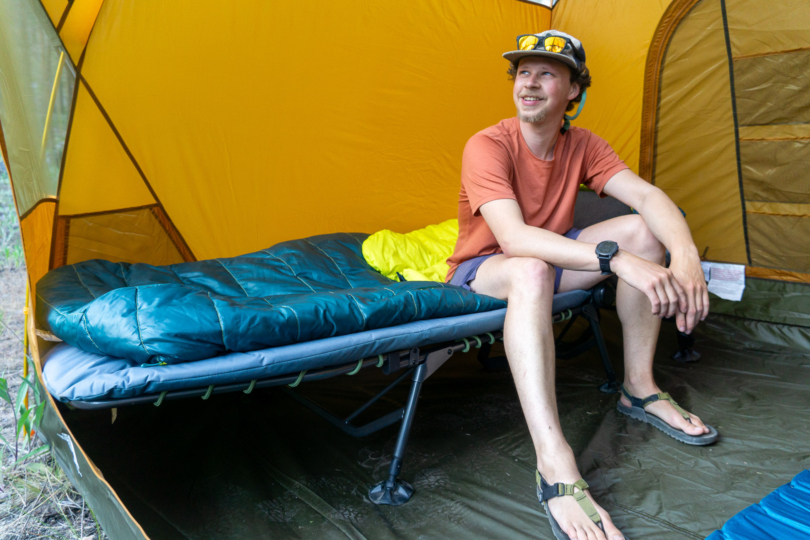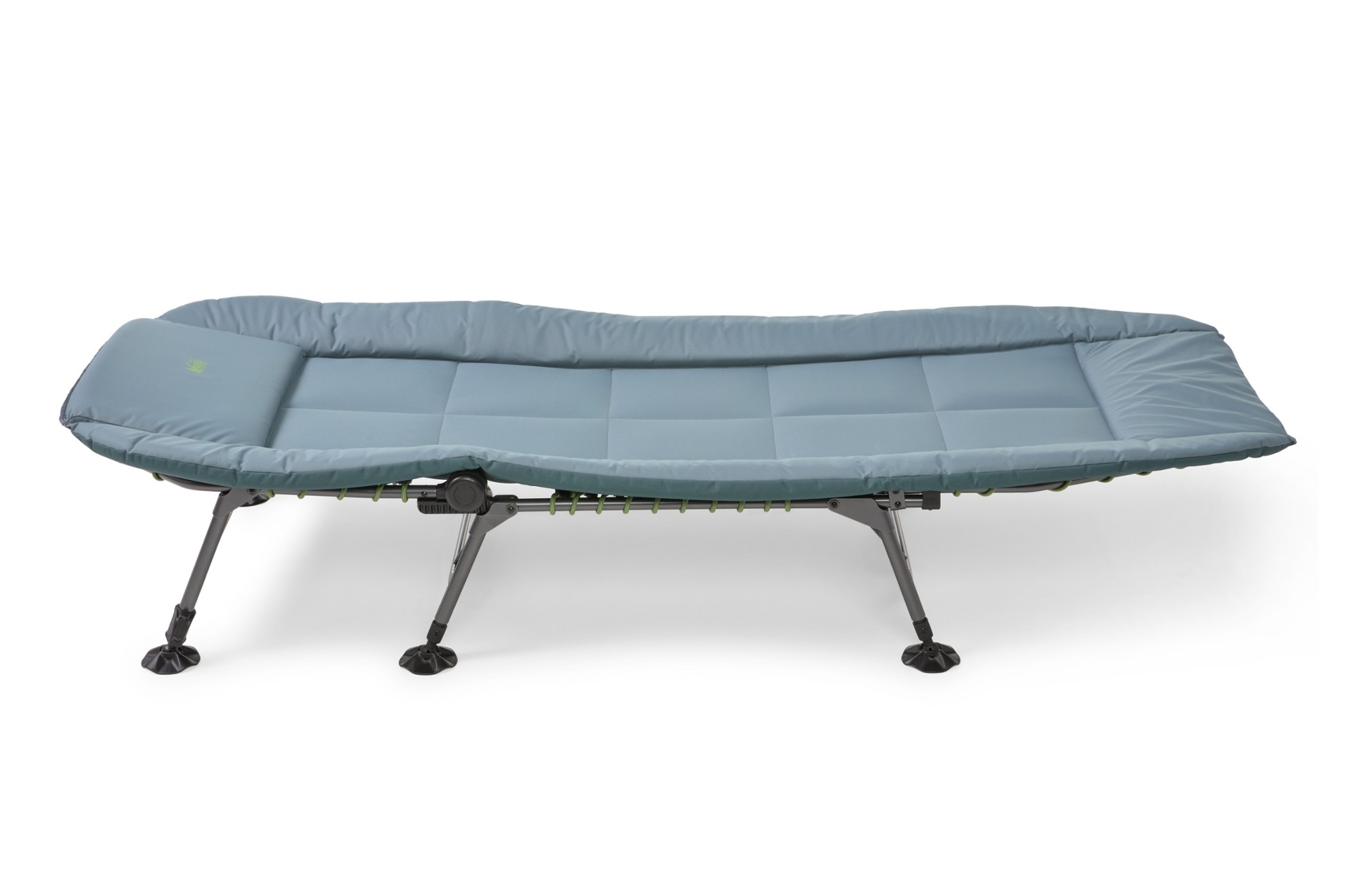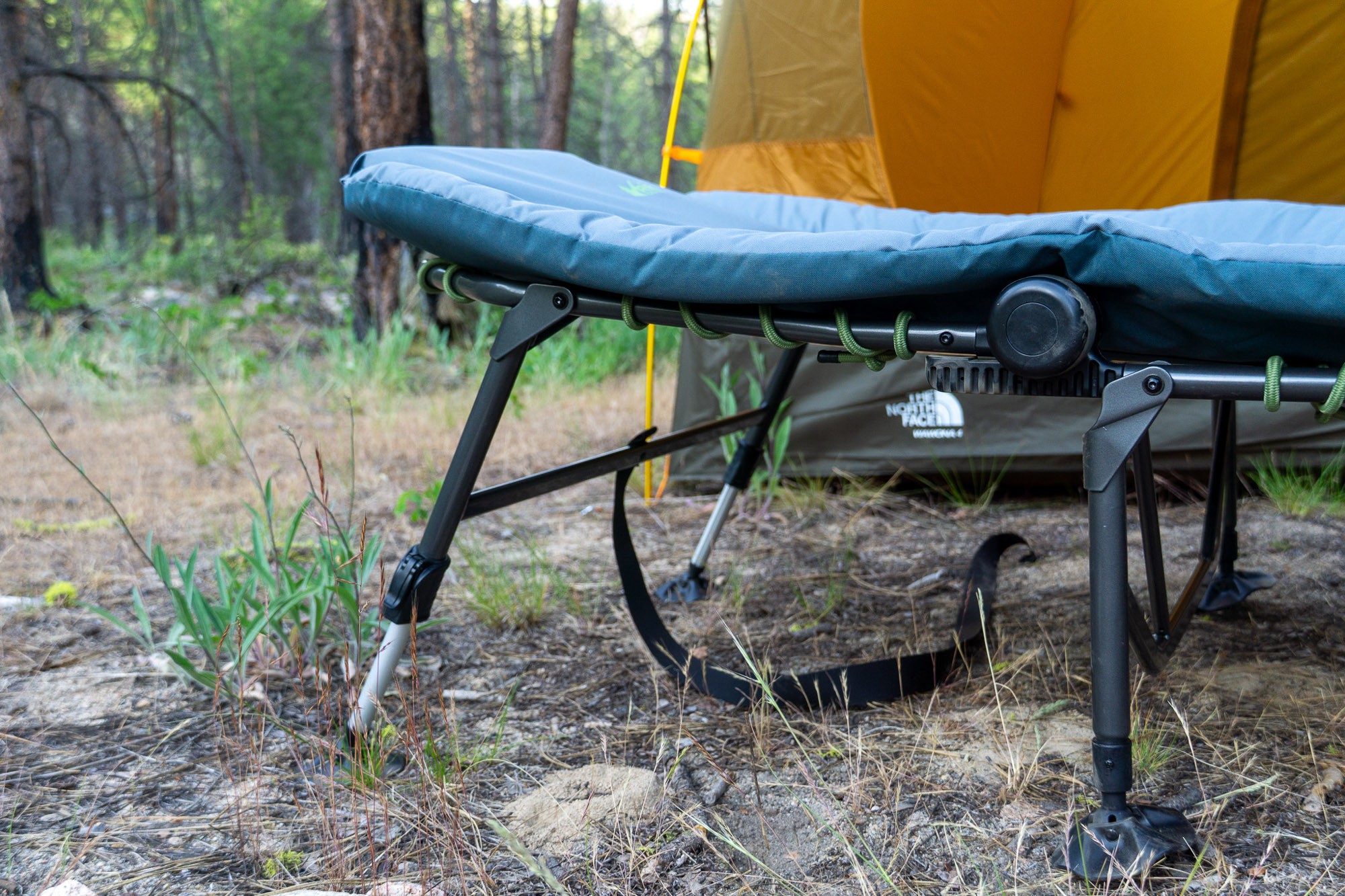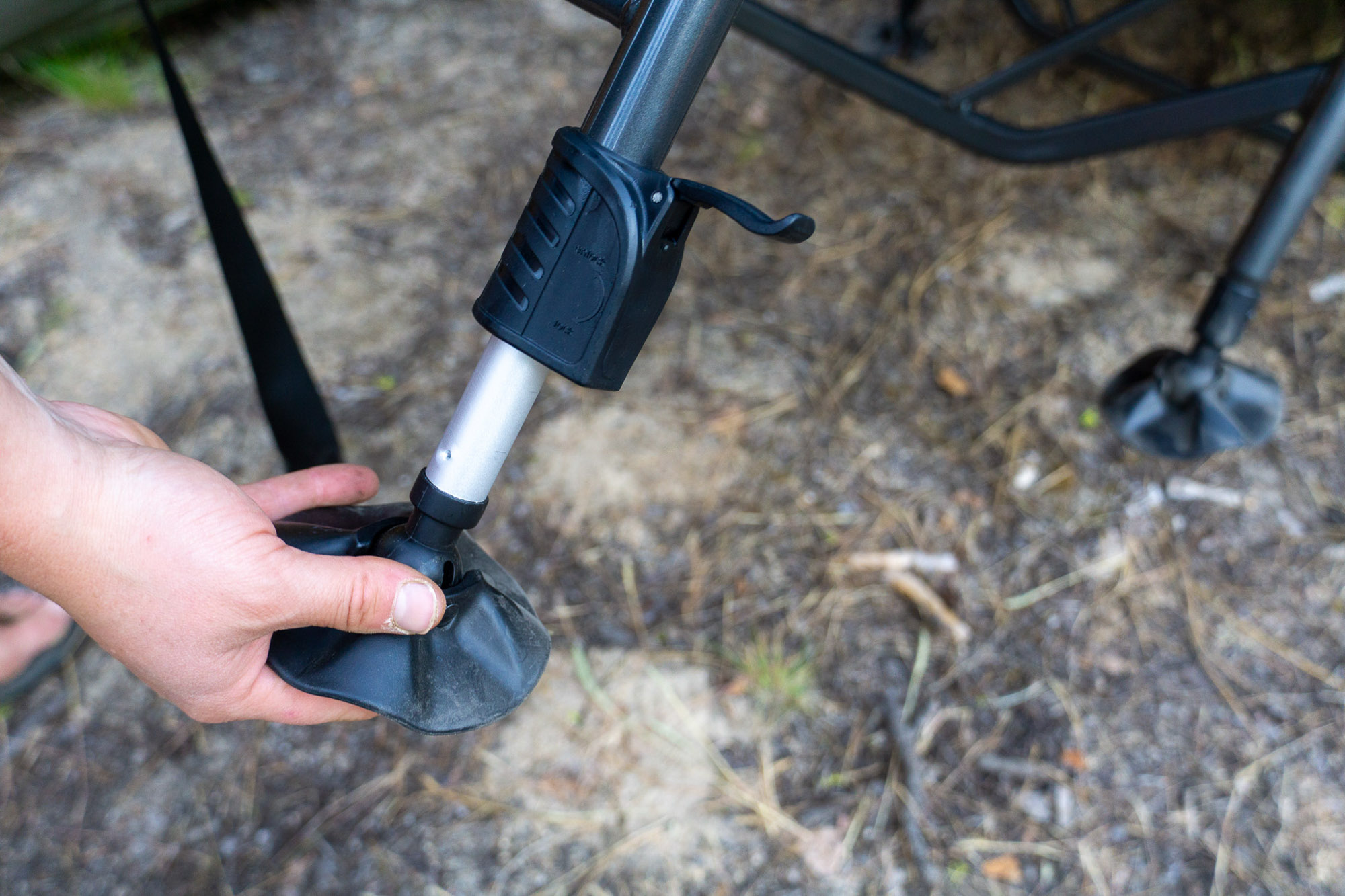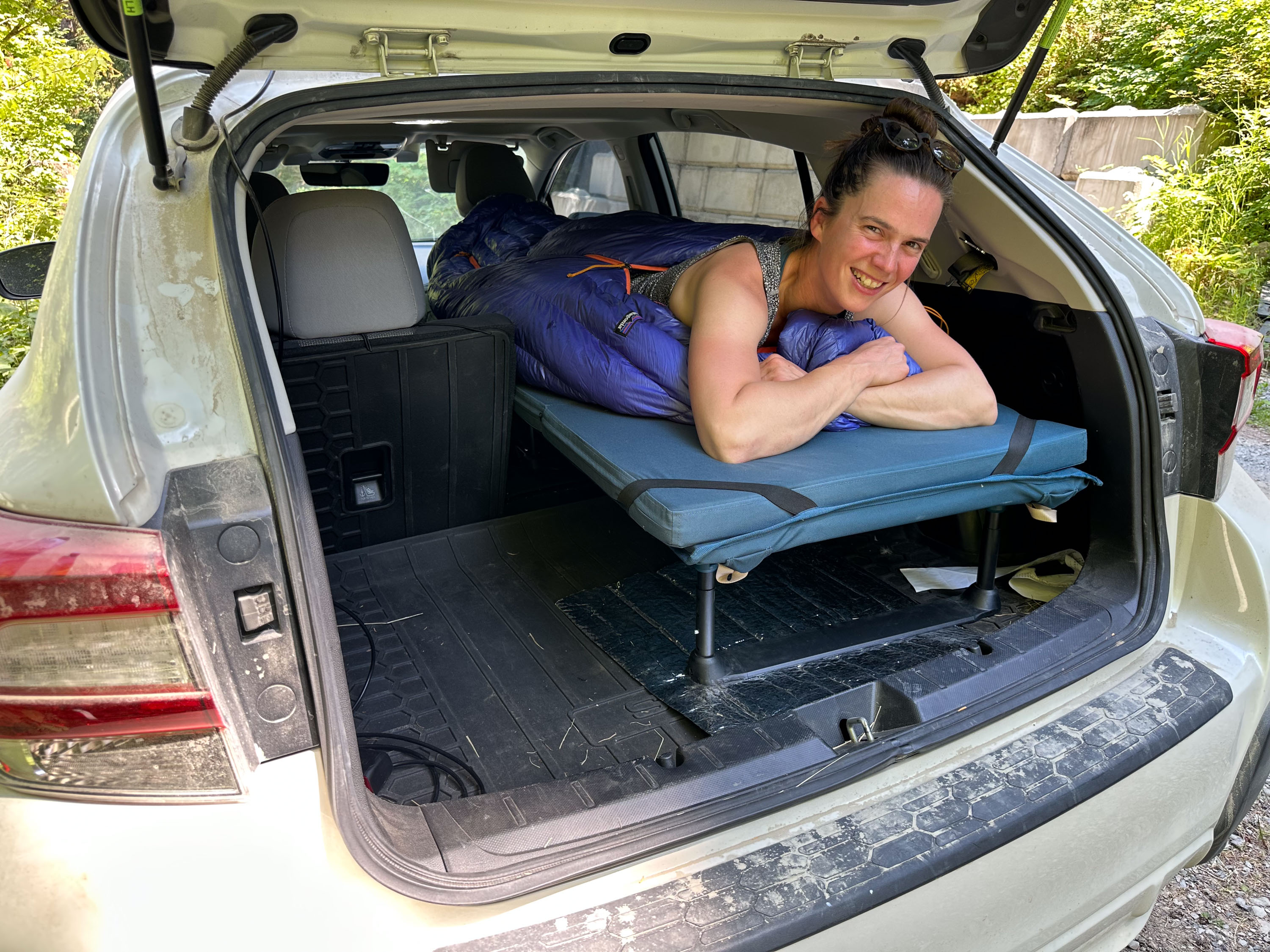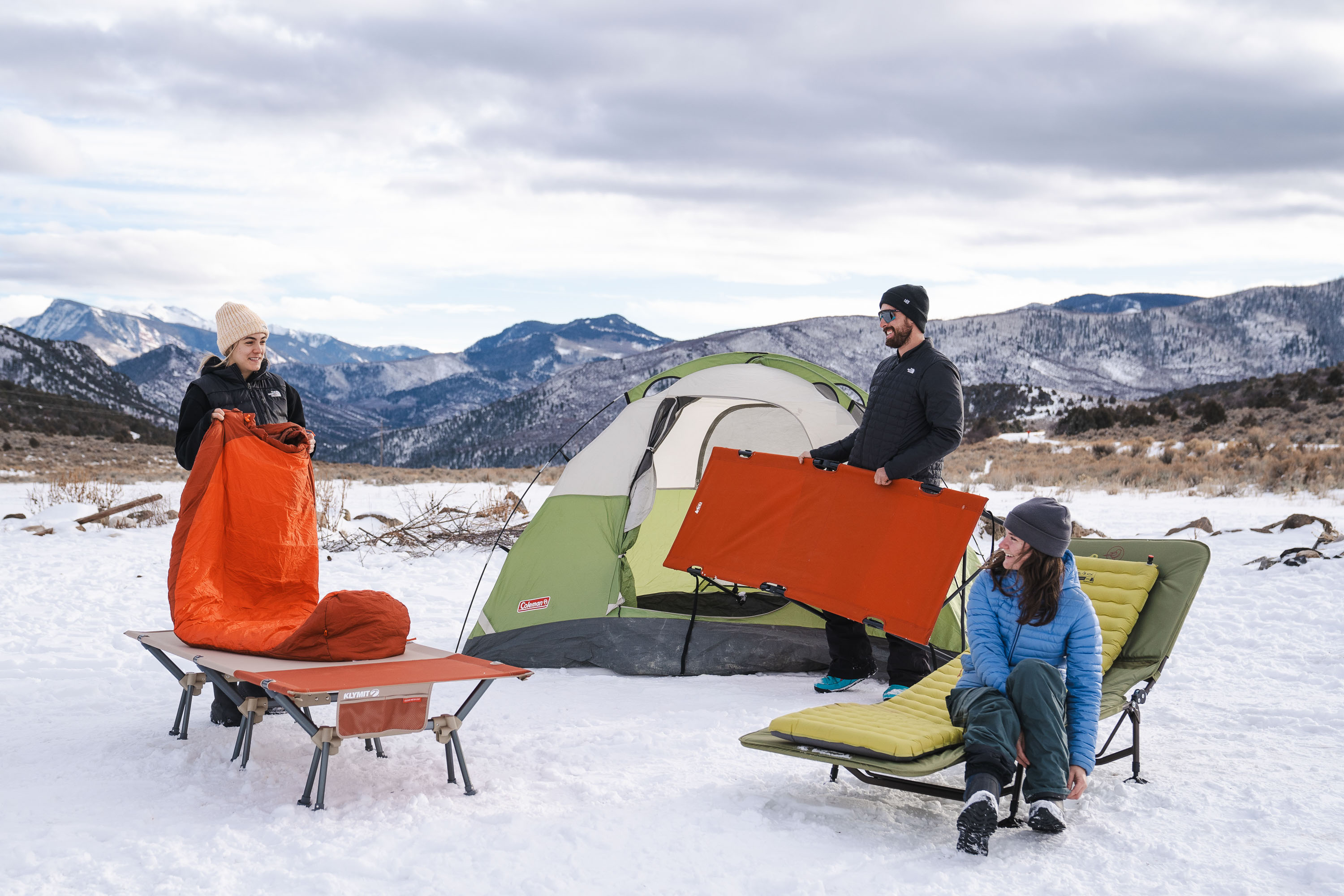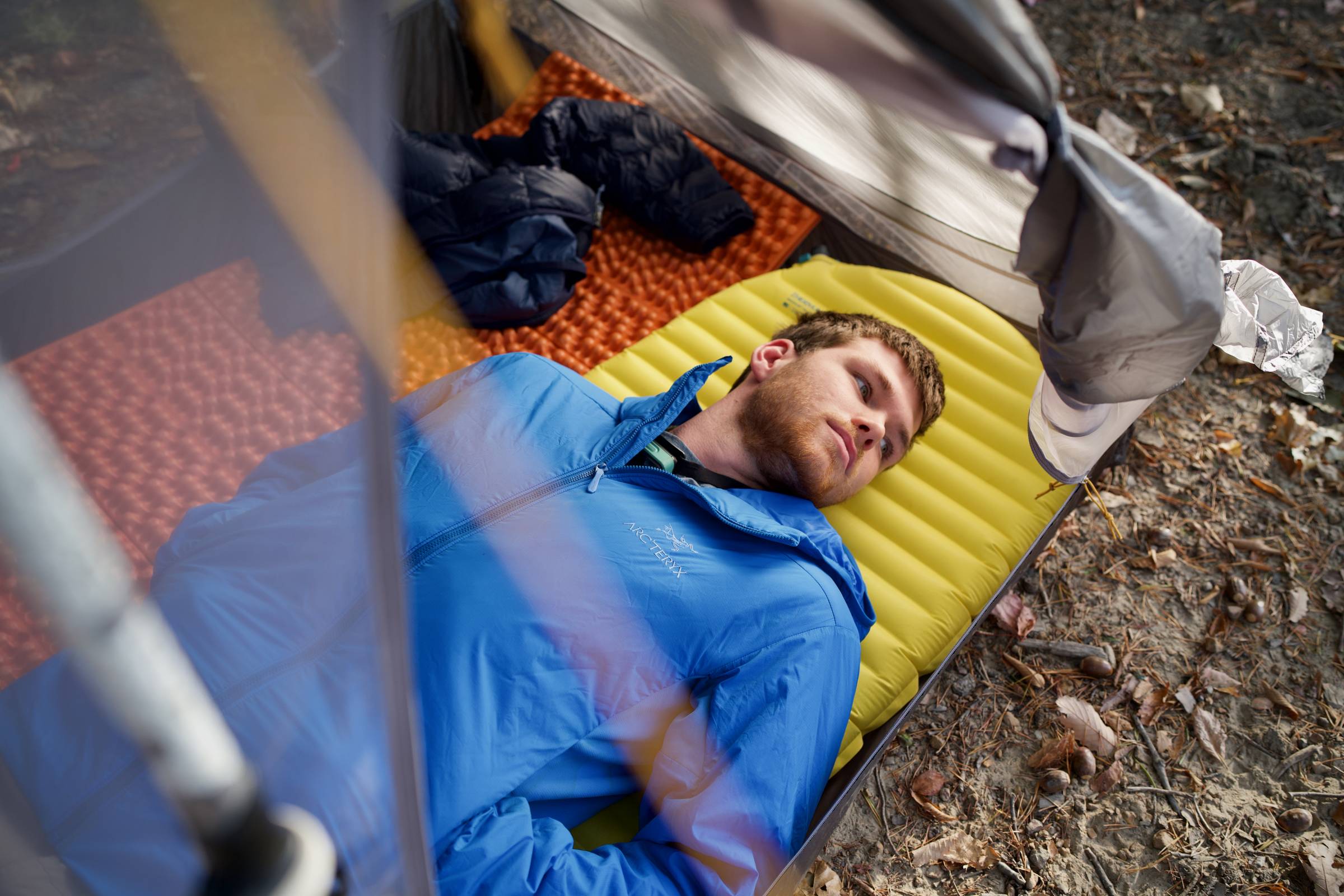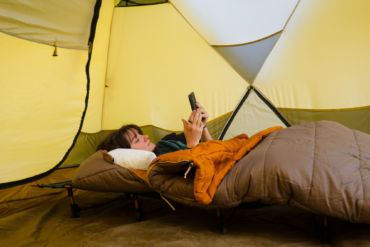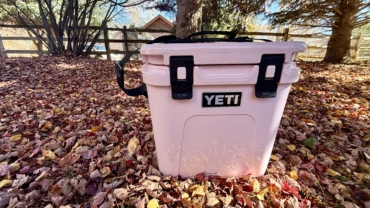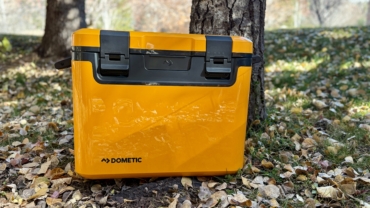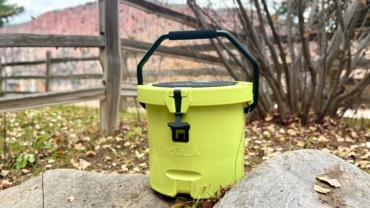Chuck out Grandpa’s Army cot — there’s no reason to suffer anymore, backcountry cadet. The built-in suspension and cushion of the REI Co-op Wonderland Comfort Cot add all the comfort and support you’ll need for a supremely elevated camp sleep.
While I’m typically more of a camp mattress dweller, I can be convinced into bringing along a camping cot for the added snooze comfort (certainly so when the truck is doing most of the heavy lifting). This past summer, I folded the Wonderland Comfort Cot into my camping excursions across Washington State to see what I’ve been missing out on.
It is a bit more involved to set up, but I’m here to say that the juice is worth the squeeze. With no extra cushion to add, the Wonderland is ready to go just as soon as it’s horizontal, and like most things, it’s tough to go back now that I know just how comfortable cot life can be.
In short: The REI Co-op Wonderland Comfort Cot has got it in the name, folks, and lives up to the promise of a bed-like sleep outdoors. It isn’t the lightest or most compact camping cot, but it very well may be the most comfortable for the money available currently. Here’s what I’ve learned about it after using it for a full year of camping.
Looking for a new camping cot? Check out GearJunkie’s Best Camping Cots Buyer’s Guide to see how the Wonderland Comfort Cot compares to the rest of the options available.
-
Comfort
9.0
-
Ease of Set Up
8.0
-
Portability
6.0
-
Durability
9.0
- Weight: 20 lbs.
- Weight limit: 300 lbs.
- Unfolded dimensions: 82" x 31.5" x 14" (L x W x H)
- Packed dimensions: 33" x 32" x 8.5"
- Best use: Car camping or as an extra bed for guests
Pros
- Very comfortable integrated sleeping pad
- Spacious sleeping area
- New carry strap included
- Adjustable firmness
- Easy to assemble (as easy as it gets, really)
Cons
- Not as comfortable for stomach sleepers
- Large packing size
- Heavy
REI Co-op Wonderland Comfort Cot: Review
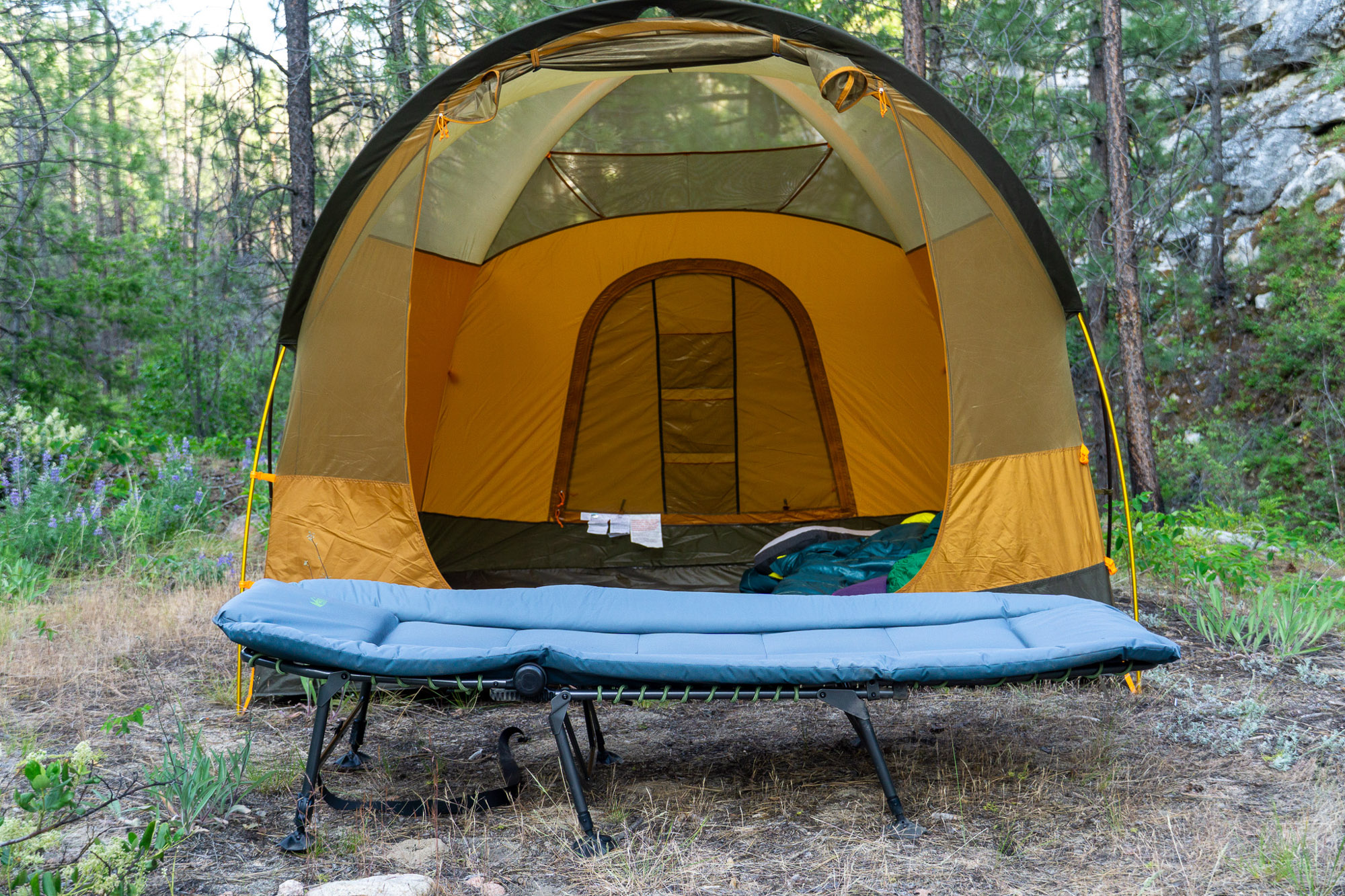
For those wondering, the Wonderland Comfort Cot is in almost every way the same as the previously available Kingdom Cot 3, with the addition of a carrying strap, a non-PFAS DWR treatment, and a new mellow blue tone. The GearJunkie team has now tested both, so we’re confident that these are the only differences.
That carrying strap is actually a keen addition, turning an otherwise unwieldy piece of camp furniture into something that is easily ferried from your vehicle to the tent. It’s got its quirks (as you’ll see below), but in general, it’s a solid pivot.
At $199, this cot lands near the middle of the pack when you consider other options out there. Your budget-minded Coleman cots might cost as little as $55, but specialized options from brands like Helinox can run you upward of $300-350. For the money, I’d say this cot provides a solid value — certainly so when you consider that it eliminates the need for an additional camp mattress.
Suspended Sleeping Comfort
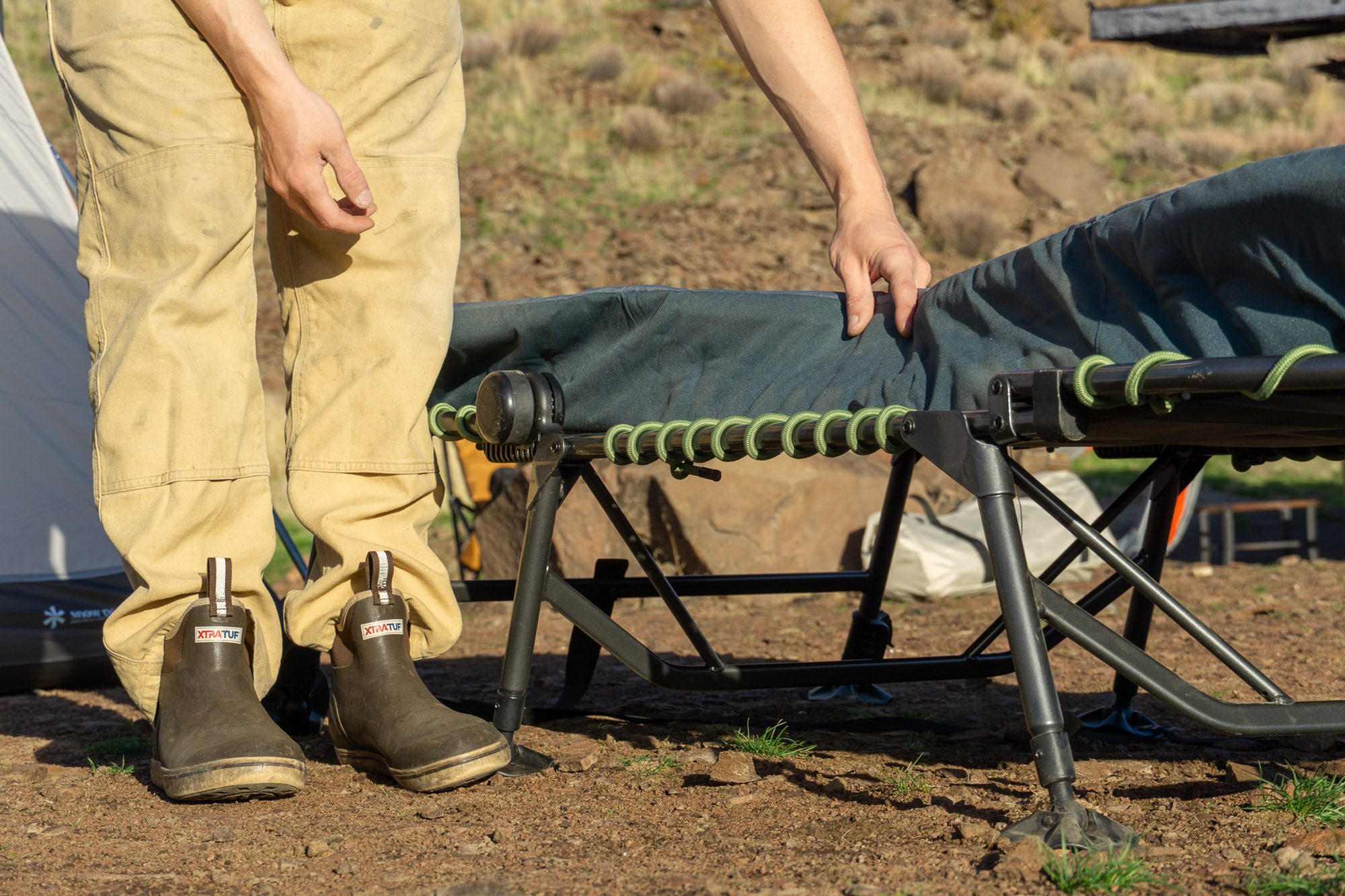
That built-in cushion on the Wonderland isn’t just for show, and it’s also not slapped onto a solid surface, but instead suspended from the metal rails that encircle the cot. A length of sturdy shock cord secures it in place, providing a cushioned sling to sleep on. This cushion could technically be removed for cleaning, but it would be a hassle to rethread the shock cord and adjust the tension. Best to leave it as is.
The sleeping surface is an ample 82 inches long by 31.5 inches wide, making it larger than most camping mattresses. Really, the only larger cot options out there are the Teton Sports Outfitter XXL Camp Cot (86″ x 41″) or the Cabela’s Big Outdoorsman Cot (85″ x 40″) — just be prepared to haul the extra weight associated with them.
After a solid week’s worth of sleep on this cot, I can confidently say that it’s as close to sleeping in your own bed as you’re going to get outdoors. The DWR coating on the sleeping surface was the only head-scratcher I had while testing this cot — are we anticipating rain inside the tent? Truthfully, the treatment probably does more to prevent camp snack stains than anything else, and for that, I can get behind the addition.
Portability and Set Up
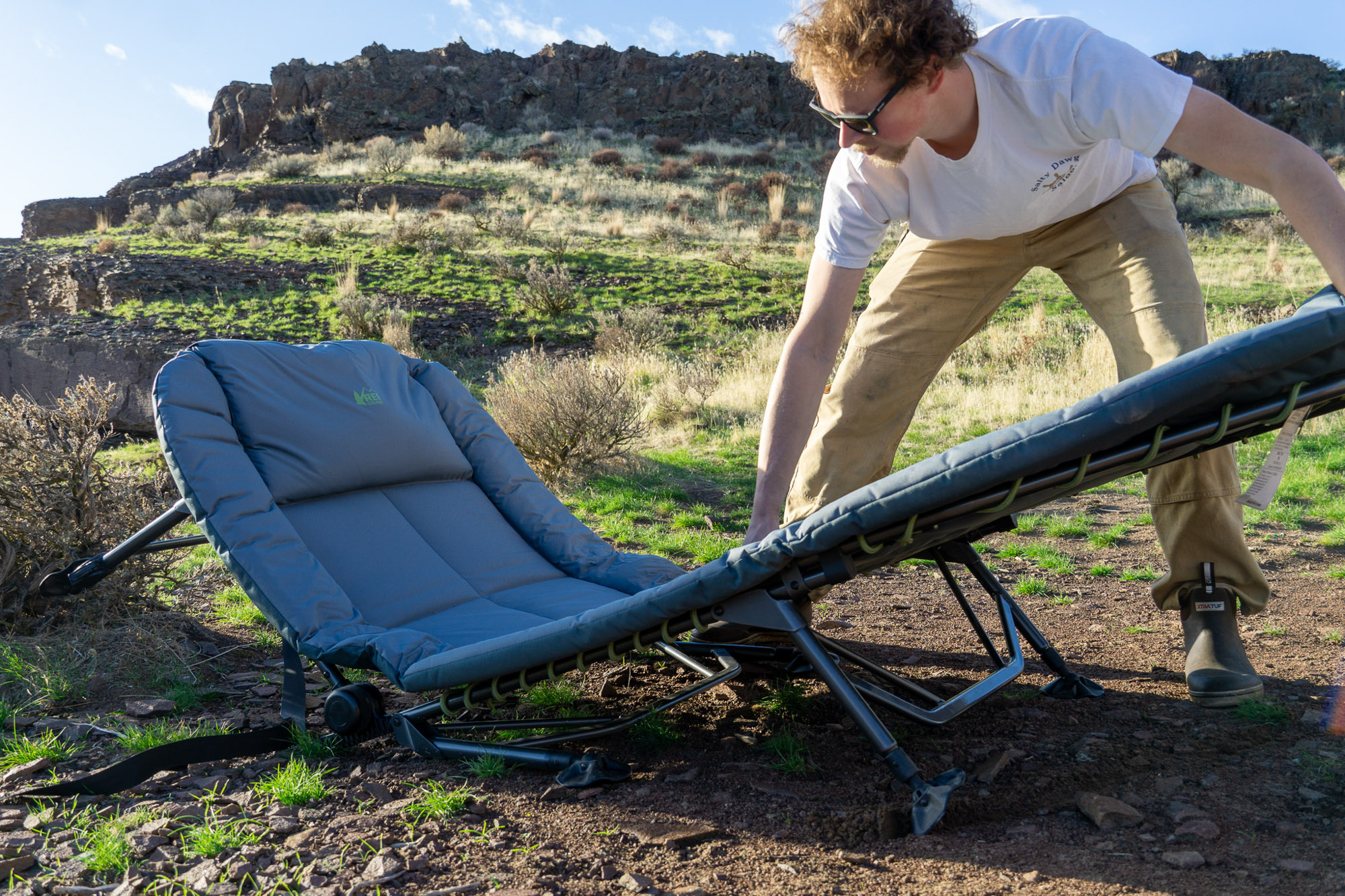
Before I get to complaining about the bulk of the Wonderland Comfort Cot, let’s be real: No camping cot is really easy to tote around. If you’re after that, you’re better served by a good camping mattress. The average weight of every option I’ve tested in the last few years has been 19 pounds, meaning the 20-pound Wonderland is just right.
The cot itself folds into three segments for travel, with leg structures folding flat. All of this is now secured with a single strap (more on this below), meaning it’s self-contained and can be chucked into your trailhead rig. There is no carry case, however, so if you’re going to store it for a while, it’s best to cover it somehow.
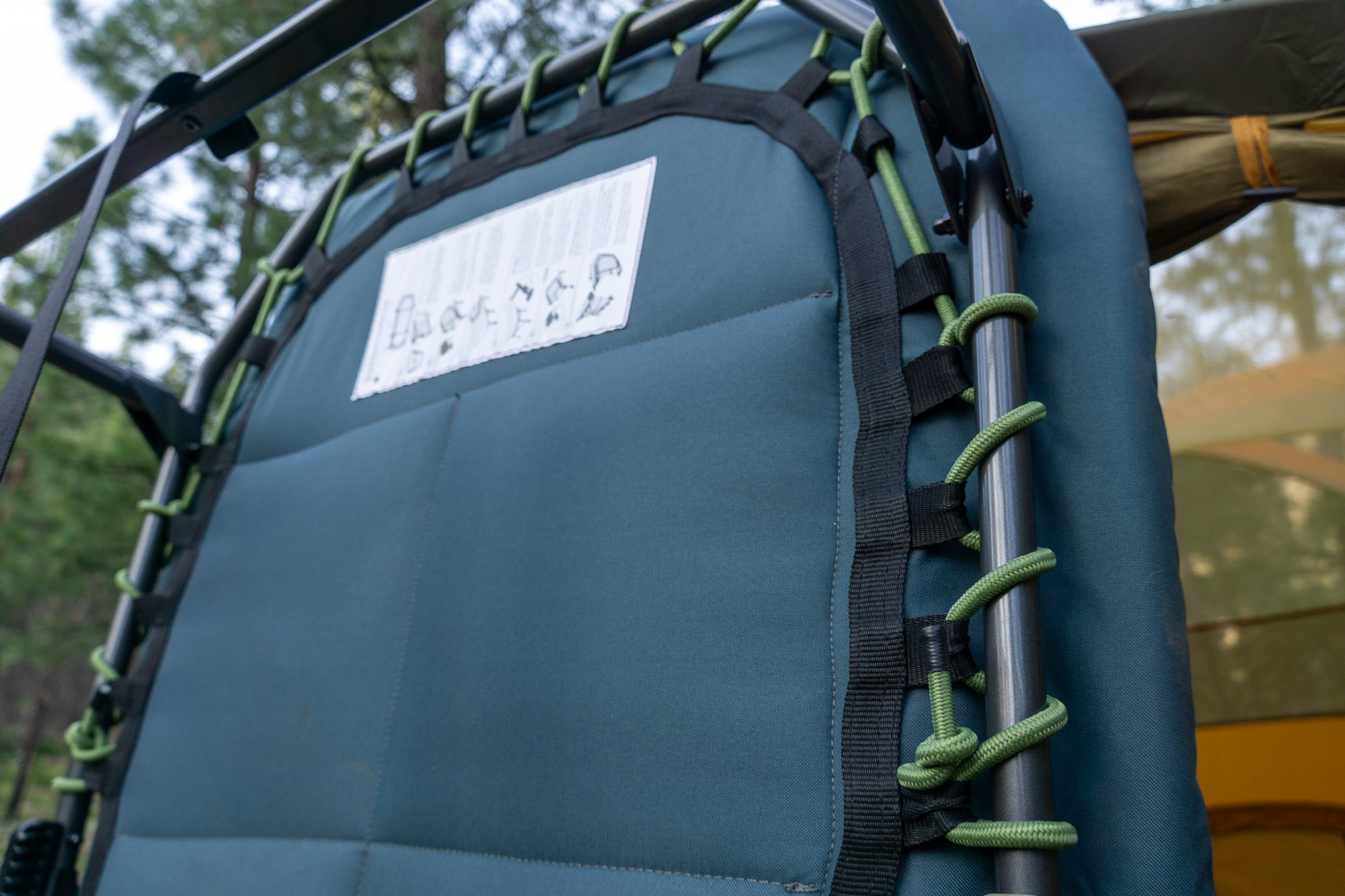
I initially attempted to set up the Wonderland without looking at the instructions (which are helpfully stitched to the bottom of the cot). This yielded a few minutes of effort, but eventually I won out. The secret is this: There’s a little tension once you get the cot 80% unfolded. Push past that to get the Wonderland horizontal.
To secure the cot in position, there are two dials on either side of the sleeping platform to lock it into place. These are toothed and very secure, meaning they won’t slip during the night.
A Keen Campsite Lounger
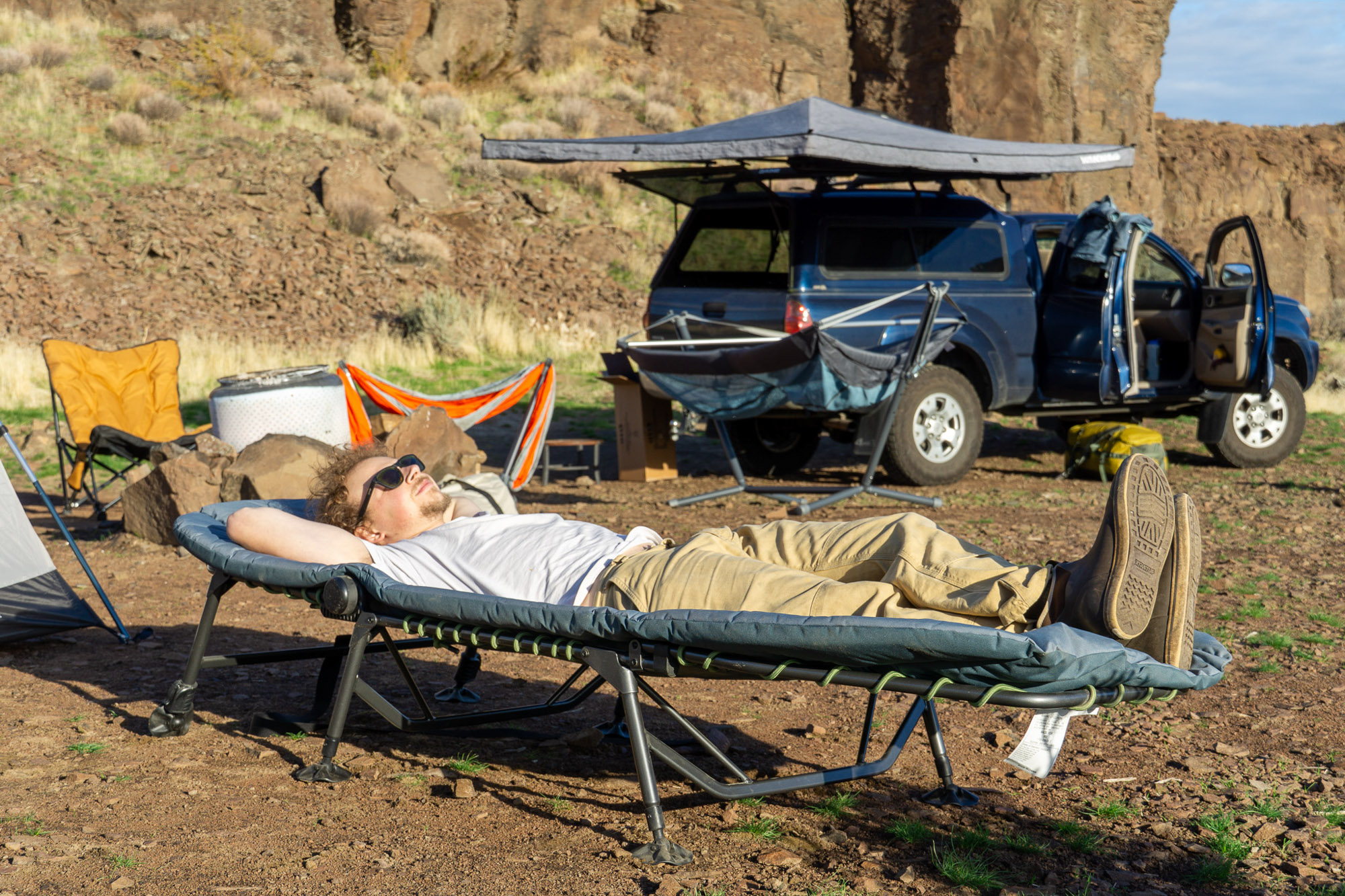
The Wonderland Comfort Cot has a little secret tucked in its sleeves: the head-end legs are vertically adjustable to cant up the sleeping surface. It’s not quite vertical enough to make the cot worthy as a camp chair, but it is enough of an angle to make reading a book a much more enjoyable experience.
This November, I soaked up the last few rays of sunshine doled out by the sun in this arrangement, and it was glorious. In an ideal world, I’d love to have seen these legs with an additional extension segment built into them, allowing the head end to rise even further (as well as maybe another set to lower the leg end).
Comparable Cot Options
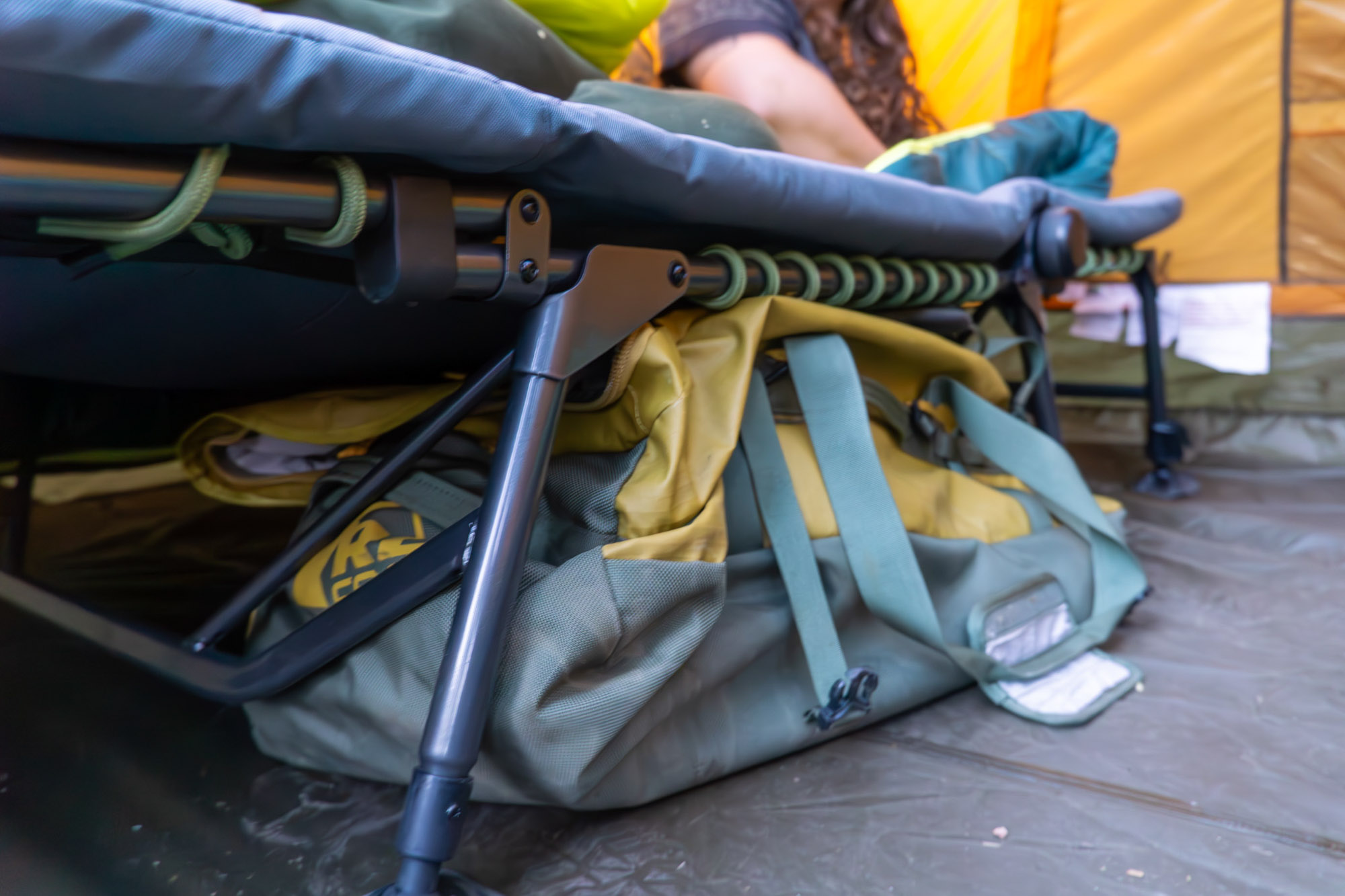
There aren’t many camping cots with integrated cushions available today — in fact, most are actually dupes of this one. The one notable exception is the Coleman ComfortSmart Deluxe Cot, a $157 option that tacks on a foam pad to a rather simple steel-framed design.
That simple frame translates to a more compact packed size, and if you’re strapped for space (or need to frequently store the thing in the attic), the Coleman will be an easier cot to handle solo.
Side by side, however, it’s tough to argue that the extra $42 isn’t well spent on the REI version: The Wonderland is 5 pounds lighter, has a longer padded platform, and is much more adjustable to accommodate uneven campsites or lounge on during the day.
If going without a built-in cushion is good with you, the Klymit Cedar Mesa Cot is similarly king-sized compared to the Wonderland, but it packs down much more compactly. The collapsible legs are removed for storage, and the entire unit packs into a case approximately the size of a travel carry-on.
Storage Strap Too Short?
When I put away my camp and collapsed the Wonderland Comfort Cot for the first time, I was faced with a unique puzzle: The storage strap seemed too short. No matter which way I wrapped it around the cot, I couldn’t secure it. How had this thing ever worked?
The storage strap is, in fact, not too short: I’m just silly. The strap is only meant to wrap around the folded section of the cot, encircling the crossbars. Doing this, it’s easy to get the whole thing cinched down tight, and carrying is a breeze.
Obviously, REI has heard this one before, as its product page sports not one but four different images, along with a new video explaining how to properly use the strap. Still, based on the number of complaints lodged against this strap alone, it’s certainly an area that REI could tweak on the Wonderland Cot.
REI Co-op Wonderland Comfort Cot: Conclusion
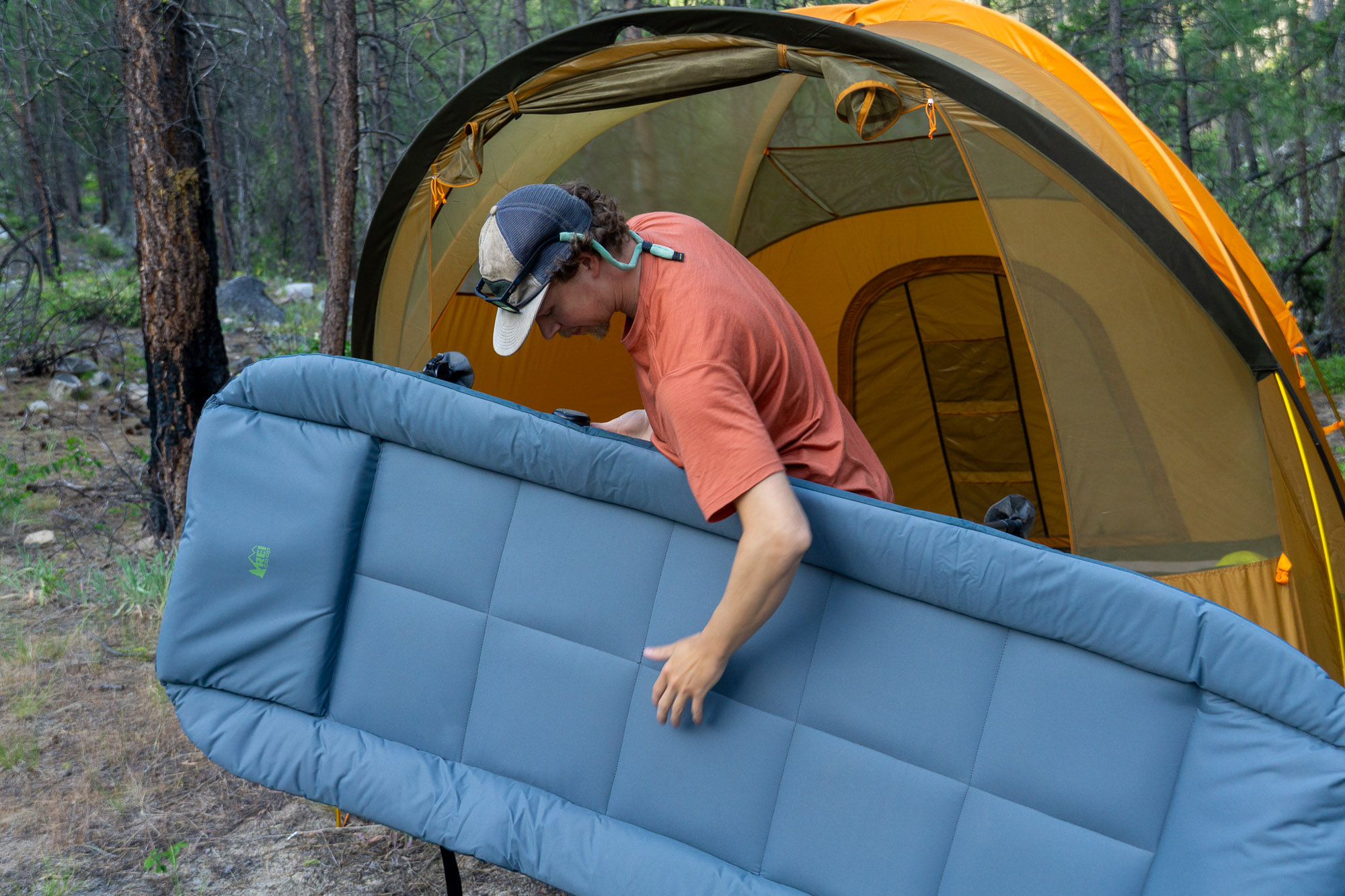
The REI Co-op Wonderland Comfort Cot is top dog when it comes to all-in-one camping cot options. The built-in cushion makes things easy for those who don’t want to fuss with adding a separate camping mattress, and the frame is robust, adjustable, and amenable to uneven camp sites.
To be sure, there are more minimalist cot options available for those who need to pack their camp furniture on something like an ATV or side-by-side. As mentioned previously, the Klymit Cedar Mesa is popular with the hook and bullet crowd for its balance of a compact packed size while still offering a robust and large sleeping surface.
But if you’ve got the luxury of mostly front-country camping excursions, the Wonderland feels like the cot that everyone ought to just upgrade to from the get-go.
